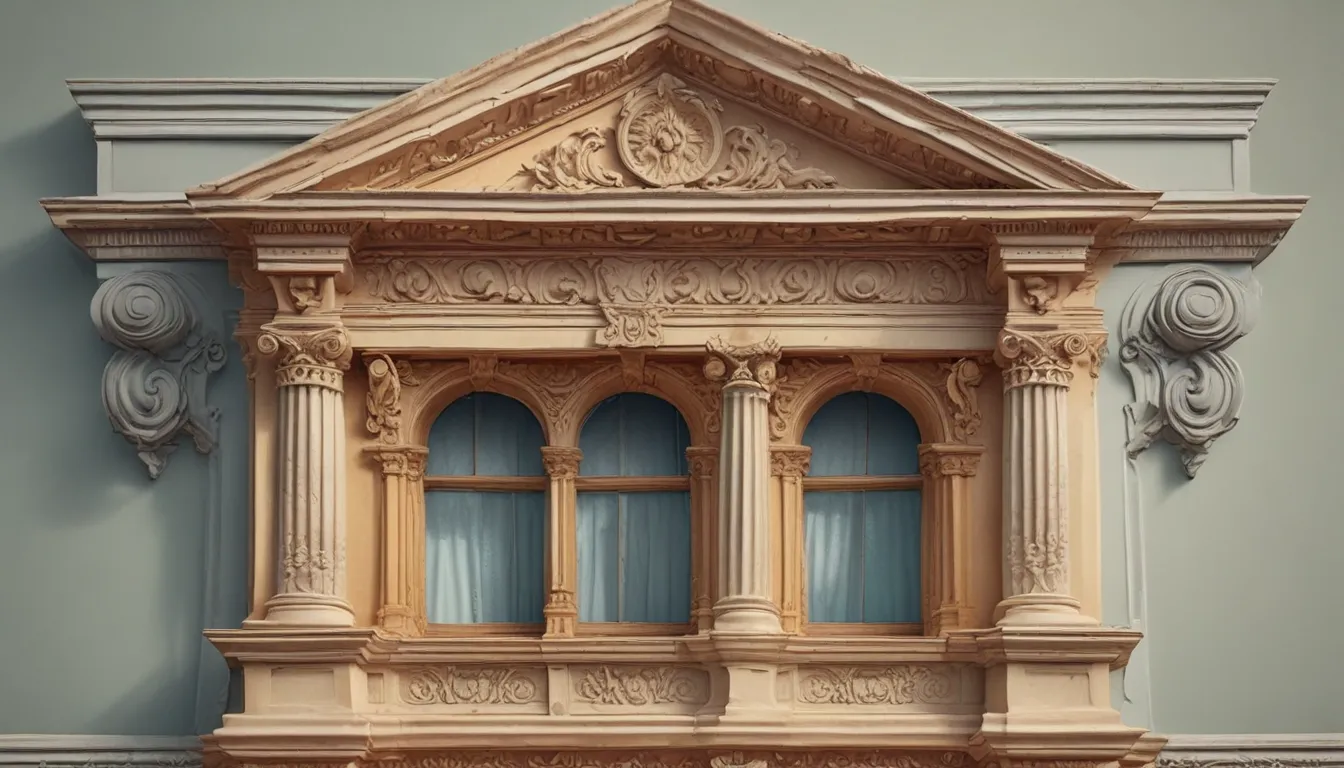A Note About Images: The images used in our articles are for illustration purposes only and may not exactly match the content. They are meant to engage readers, but the text should be relied upon for accurate information.
Welcome to the world of geography, where the wonders of our planet unfold before our eyes, revealing the intricate tapestry of cultural, historical, and geological heritage. Amidst towering mountains and vast oceans lies a mysterious geological formation known as the pediment. In this article, we will embark on a journey to explore eight captivating facts about pediments, shedding light on their origins, symbolism, and significance in the realm of geography. Join us as we unravel the mysteries surrounding these enigmatic landforms.
The Ancient Origins of Pediments
Centuries ago, in the heart of ancient Greece, pediments emerged as prominent features in temple architecture. The triangular shape and intricate designs of pediments were a hallmark of Greek aesthetics, inspiring architects across the ages to incorporate them into various architectural styles. From classical Greek and Roman structures to contemporary buildings, pediments have left an indelible mark on the world of architecture, bridging the gap between the past and the present.
Symbolism Embodied in Pediment Designs
Step closer to a pediment, and you’ll find yourself immersed in a world of symbolism and storytelling. These decorative elements often feature mythological figures, representations of virtues, and historical events, each symbolizing a deeper meaning waiting to be deciphered. The intricate sculptures adorning pediments serve as visual narratives, inviting observers to unravel the hidden messages etched in stone.
Pediments: A Timeless Architectural Element
From Gothic cathedrals to Neoclassical buildings, pediments have seamlessly integrated into various architectural styles, transcending time and trends. Their adaptability and enduring appeal have made them a staple in architectural design, adding a touch of grandeur and sophistication to buildings worldwide. Whether perched above grand entrances or gracing the facades of humble dwellings, pediments continue to captivate the imagination of architects and admirers alike.
The Grandeur of Pediments: Elevating Building Aesthetics
Picture a building adorned with a pediment, and you’ll witness the transformative power it holds. Serving as crowning elements above entrances or as focal points on architectural facades, pediments exude a sense of grandeur and elegance that commands attention. Their presence elevates the aesthetic appeal of buildings, bestowing upon them a timeless charm that resonates across generations.
Simple or Ornate: The Versatility of Pediment Designs
While some pediments dazzle with intricate details and elaborate sculptures, others embrace simplicity with minimal embellishments. This versatility allows architects to tailor pediments to suit a wide range of architectural projects, from opulent structures to understated dwellings. The diversity in pediment designs reflects the boundless creativity and adaptability of this timeless architectural feature.
Pediments as Focal Points: Guiding the Observer’s Gaze
Positioned strategically on building facades, pediments serve as visual anchors that guide the observer’s gaze to key architectural elements. Their prominence and eye-catching designs make them standout features that draw attention and create a sense of symmetry and balance in architectural compositions. A building adorned with a pediment becomes a visual masterpiece that demands admiration and appreciation.
Embracing Diversity: Pediments in Religious and Secular Architecture
While pediments are commonly associated with religious structures like temples and churches, their reach extends far beyond sacred spaces. Pediments can be found adorning government buildings, museums, and private residences, showcasing their universal appeal and adaptability in diverse architectural settings. This inclusivity underscores the versatile nature of pediments, transcending boundaries of faith and function.
Inspiring Modern Architecture: A Blend of Classic and Contemporary
The legacy of pediments lives on in modern architecture, where echoes of their designs resonate in innovative ways. Contemporary architects infuse elements and motifs reminiscent of pediments into their creations, striking a harmonious balance between the timeless allure of the past and the bold vision of the future. This fusion of classic aesthetics with modern sensibilities adds a unique dimension to architectural landscapes, enriching our built environment with a touch of heritage and innovation.
Conclusion: Unveiling the Mysteries of Pediments
As we draw to a close on our exploration of pediments, we unveil the allure and significance of these enigmatic geological formations. From their ancient origins to their enduring presence in architectural design, pediments stand as testaments to the artistry and ingenuity of human creativity. Whether gazing upon a pediment in person or studying its formations from afar, we are reminded of the geological wonders that shape our world and the stories that lie within each intricately carved detail. So, the next time you encounter a pediment, pause, and ponder the rich history and craftsmanship that have sculpted these captivating features.
FAQs: Delving Deeper into Pediments
Q: What defines a pediment?
A: A pediment is a gently sloping or flat erosion surface found at the base of a steep slope or mountain.
Q: How are pediments formed?
A: Pediments are primarily shaped by erosion, as rocks and sediment gradually erode from the base of a slope due to wind, water, or glacier activity.
Q: Are pediments exclusive to specific geographic regions?
A: While pediments can be found worldwide, they are more prevalent in arid or semi-arid regions due to their geological formation processes.
Q: What geological insights do pediments offer?
A: Pediments provide valuable clues to the geological history of a region, shedding light on the processes that have shaped the landscape over time.
Q: Can pediments be utilized for recreational activities?
A: Pediments offer opportunities for hiking, photography, and wildlife observation, provided that environmental conservation ethics are upheld.
Q: Are pediments vulnerable to damage?
A: While naturally occurring, pediments can be sensitive to human interference, necessitating responsible tourism practices to ensure their preservation.
Q: Do pediments exist solely on land?
A: Pediments can also be found beneath bodies of water, with marine pediments mirroring their terrestrial counterparts in coastal areas.
Q: Can pediments indicate valuable mineral deposits?
A: Yes, some pediments may signal the presence of underlying mineral resources, attracting the interest of miners and geologists.
Embrace the Mystique of Pediments
As we conclude our exploration of the enigmatic world of pediments, we invite you to immerse yourself in the wonder and beauty of these captivating geological formations. From their ancient origins to their modern-day influence, pediments stand as timeless symbols of human creativity and the enduring legacy of architectural design. Whether you encounter a pediment in the heart of a city or nestled in the embrace of nature, take a moment to appreciate the artistry and craftsmanship that have sculpted these remarkable features. As we delve deeper into the mysteries of pediments, we uncover a world of geological marvels waiting to be discovered and shared with the world.






